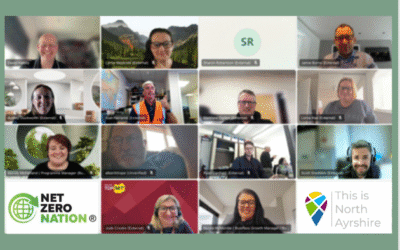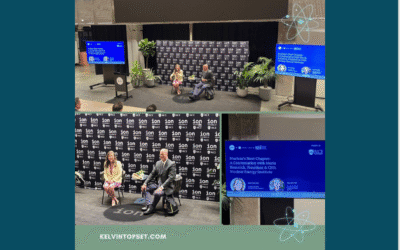Invest in Prevention Through Investigation: Can You Afford Not to?
At a time when people’s jobs hang in the balance and industry purse strings are tight if not tied, it is understandable why companies are looking to cut spending where possible; the training budget is usually first to go, with health and safety lower down on the business priority list. Why would you want to invest in health and safety in the short term when it may not yield any benefits in the long term? Insurance is there to cover any accidents, and your company has a great safety culture anyway, right?
Let’s take a look at how these assumptions could end up costing you. The insured costs of an accident, such as compensation payouts and medical costs, are only the tip of the iceberg. The hidden costs are the ones that could ruin a business should the worst happen, which it occasionally does. In the UK, the financial cost associated with workplace accidents is £4.9 billion per year1. This may seem like scare tactics, but the intention here is to highlight the necessity for ongoing health and safety best practices, part of which can be achieved through consistent and effective incident investigation. Adopting a complete system that can take you through the whole investigation process, not just straight to the root causes, is an investment in the prevention of incidents and, therefore, the prevention of unseen costs. Consequently, this would not only result in a safer workplace but a more profitable and sustainable one. And it’s not only learning from the consequences of incidents that can help with this but the potential consequences too (in light of new prosecution rules and an increasing focus on corporate social responsibility).
The intention here is also to reassure you. It is especially in these times of recession that you need a business case for investigating incidents thoroughly and continuing to invest in training so that your team is equipped to do so efficiently and effectively. It is therefore crucial to look at how much incidents actually cost in order to help you persuade the board that now is the time to invest in a system that will save the company money in the long run. No doubt your current safety culture and incident record are robust, but unfortunately things can ultimately go wrong. There are still more than 1 million injuries to workers annually in the UK and more than 2 million cases of ill health caused or made worse by work. There are also many more minor incidents that occur every day in industry, and it is important to remember that learning from these can help guard against the catastrophic ones.
Good safety stems from lessons learned which, in turn, lead to the prevention of incidents and, ultimately, to good business. Can you put a value on the cost of accidents in your workplace? Not having an idea of the cost of potential accidents in your workplace is bad for business. Can you really afford to have an accident now?
Let’s think about this in more detail. Imagine just one of your key employees was involved in an accident. What would this mean to your business? What about the cost of going through a prosecution or the damage it could cause to your reputation? The late Trevor Kletz had a fondness for the old maxim, “If you think safety is expensive, try having an accident. Accidents cost a lot of money, not only in damage to plants and in claims for injury, but also in the loss of the company’s reputation” (which could be catastrophic for any business). He was a firm believer that people should be persuaded by “sound reason” and “take the safer course”. When you see the potential cost of accidents to your company, not to mention the moral obligation you have to look after staff welfare, there is no sounder reason to act.
However, these hidden costs can be difficult to quantify. Let’s try to take a look at some of them in real terms. The Health and Safety Executive (HSE) has estimated that the ratio between insured and uninsured costs arising from accidents lies in the range of 1:8 to 1:36. So in the worst case, for every £100 recovered from the insurer, the business loses about £3,6002. This example alone demonstrates that there are huge savings that can be made here beneath the water line.
Why should you invest in training staff in incident investigation and prevention?
The average cost to employers of a non-fatal injury causing 7 or more days’ absence is £4,800, which can include extra wages, loss of production, recruitment costs, wages for a replacement worker and overtime, sick pay, legal expenses, enforcement fines, claim excesses, raised insurance premiums, and so it goes on. Preventing just one minor incident in your workplace could therefore save your business almost £5,000 using average figures; this goes a long way towards justifying the need to train staff in incident investigation and prevention.
In addition to this monetary cost saving, there are also savings to be made in terms of the unquantifiable human cost of injury and ill health. Just as human factors always play a part in the root cause/s of an incident, they are also the inevitable consequence. Reduced workforce morale, caused by an accident and its subsequent psychological effects, could create a less safe and productive workforce. People can become less invested in the company and feel undervalued or depressed and anxious, which in turn could change their safety attitudes and behaviours. Lives can also be ruined because of an injury due to lack of income and inability to work, not to mention the ripple effect of pain and suffering. Safe and healthy working environments need to incorporate visible management techniques to help clarify expectations, model safe behaviours and ensure employee engagement.
Calculating the costs of incidents – how to attribute a value
ROSPA states that costing accidents in your company is important to help make the case for investing to upgrade control measures, monitoring, procedures and training, as well as to prioritise any preventative efforts, for example, by identifying areas where additional investment in prevention is likely to be most cost effective3. To help you carry out your own incident costing exercise, Kelvin TOP-SET has created an ‘Incident Costing Calculator’. Please feel free to download and use this simple tool (www.kelvintopset.com/resources).
Once you have demonstrated the cost of accidents to your company, the next step should be aiming to integrate a sound incident investigation and prevention system into your current safety management system.
Kelvin TOP-SET can offer a holistic approach to incident investigation and prevention and can help you to identify, plan and prioritise any preventative efforts. We offer a full range of incident investigation courses, software, e-learning and services, including access to a team of highly trained impartial investigators should you need to call upon us for assistance. The Kelvin TOP-SET Incident Investigation System itself leads you to the real root causes of incidents by following a logical process. This is then followed by the creation and implementation of effective remedial actions and organisational learnings based on your findings.
Investment in prevention is not only good for the bottom line, it also sends out a very positive message to your employees and wider industry.
Are you ready to invest in incident prevention?
Let’s look again at the figure of £4,800 mentioned above (the average cost to employers of a non-fatal injury causing 7 or more days’ absence). In investment terms, this amount alone would equate to:
• 3 employees becoming Kelvin TOP-SET trained (2 trained to Senior Investigator level who would be able to effectively lead an investigation team, and 1 trained to Investigator level, who would be able to play an integral part in any investigation team.)
OR
- 9 employees becoming trained InvestigatorsOR
- 19 employees completed the Kelvin TOP-SET online e-RCA Course.
Putting employees on a course is a simple yet business-critical investment in your company’s future.
Invest in prevention now to help weather the storm of recession whilst becoming a resilient learning organisation of the future.
Contact us today to learn more about how Kelvin TOP-SET can help you.
1 HSE – ‘Costs to Britain of Workplace Fatalities and Self-reported Injuries and Ill Health’, 2013/14
2 ROSPA, ‘Making the Case for Health and Safety’, 2015 3 ROSPA, ‘The Business Case for Costing Accidents’ 2014



